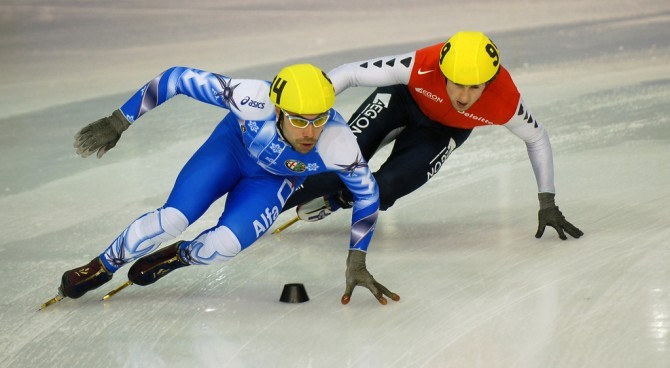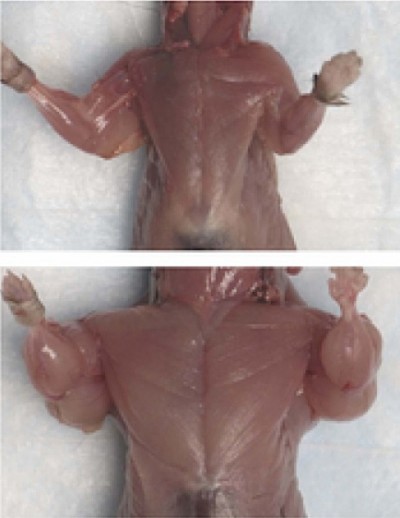Scientists Hot on Gene Doping Trail
Scientists Hot on Gene Doping Trail
 therapy and gene-targeting therapeutics were mostly a matter of medical prediction. Since then, they’ve moved to the edge of medical reality. Most advances are still limited to lab animals, but that hasn’t stoppedAfter warning for years that athletes would try to dope their genes, scientists are finding ways to catch them. The tests are still being refined in animals, but will likely be run years from now on samples taken at the upcoming Winter Olympics and stored.
therapy and gene-targeting therapeutics were mostly a matter of medical prediction. Since then, they’ve moved to the edge of medical reality. Most advances are still limited to lab animals, but that hasn’t stoppedAfter warning for years that athletes would try to dope their genes, scientists are finding ways to catch them. The tests are still being refined in animals, but will likely be run years from now on samples taken at the upcoming Winter Olympics and stored.
The tests reflect a new approach to doping detection: Rather than targeting specific, easily masked chemicals, they look at system-wide changes in gene expression and protein production.
“Before, drug testers took a toxicological approach,” said Olivier Rabin, science director at the World Anti-Doping Agency. “Now we’re on much more of a medical and forensic approach.”
The International Olympic Committee formally banned gene doping in 2003, when gene athletes from hoping for an early if unproven edge.
Bodybuilding magazines already carry advertisements for DNA-tweaking drinks and pills. Experts say these are fraudulent, but reputable researchers are routinely contacted by coaches and athletes wondering if their animal treatments can be given to humans.
Three years ago, German track coach Thomas Springstein was busted after unsuccessfully trying to score Repoxygen, an experimental gene therapy drug that boosts red blood cell production, for his runners. At the Olympics in Beijing, an unidentified Chinese doctor offered stem cell injections to a German journalist posing as a swim coach.
“We have no evidence that any athlete bought or used that stuff,” said Mark Frankel, an American Association for the Advancement of Science bioethicist who studies gene doping. “But the next big movement forward in terms of cheating is very likely to be in the genetic arena.”
 The most likely biological targets for cheating are erythropoietin, the protein enhanced by Repoxygen; genes for the production of myostatin and insulin-like growth factor I, which affect muscle production (as in the lower mouse in the photo); and peroxisome proliferator-activated receptors, a family of proteins that regulate metabolism and have been touted as providing “exercise in a pill.”
The most likely biological targets for cheating are erythropoietin, the protein enhanced by Repoxygen; genes for the production of myostatin and insulin-like growth factor I, which affect muscle production (as in the lower mouse in the photo); and peroxisome proliferator-activated receptors, a family of proteins that regulate metabolism and have been touted as providing “exercise in a pill.”
For now, none of these boosts can be detected. But all of them are being studied by researchers supported by the World Anti-Doping Agency, who have sponsored dozens of test-developing projects.
Some of the tests are aimed at detecting immediate evidence of doping: leftover fragments of engineered viruses used by gene therapists, telltale proteins, obviously modified DNA sequences, and so on.
But this is difficult. Such evidence is hard to find and degrades quickly in the body. Moreover, even if a first generation of tests are successful, they could be tricked by slight changes to gene-modifying approaches.
Instead, researchers are looking for broader changes that are produced by gene modification and can’t be masked. Tweaking insulin-like growth factor, for example, appears to change levels of fatty acid production and body-wide protein expression in ways that can’t be masked.
“The concept is that if you suspect doping, you don’t look for the drug, but for the effects of the drug on global gene expression and proteomic patterns,” said Theodore Friedmann, a University of California, San Diego geneticist who’s now combining results from WADA-supported research into statistical models of cheating. “Even if someone makes a chemical change to a drug to make it invisible to testing, they can’t wipe out the effects of the drug.”
This approach could end up being applicable not only to genetic modification, but to changes produced by traditional performance enhancers, like steroids and growth hormone.
Friedmann cautions that much work remains to be done on these tests, which are still limited to animal studies. But even if they take years to be refined, the tests could be used on biological samples already taken from elite athletes.
“We have to make sure the changes we find aren’t caused by gender or nutrition or training, and there are issues with genetic privacy,” said Friedmann. “But the samples can be put away for up to eight years. We can go back to them later.”
Could even these system-wide tests be duped?
“Anything you do to your body changes your body,” said Rabin. “Is there a perfect crime? Many investigators will tell you no.”
..But.... we know better.. Just think rhGH, every athlete, even the most innocent looking ones use it, on the Olympics. The winnars that is. If Balco hadn't been given away, the WADA NEVER would have found out. And what do they know about today's designer steroids?? Exactly... they'd wish.
And once they do, the Business will create new ones! Now with so many brilliant scientists in countries like Russia- India and China that earn very very little money the temptation to sell/create designer steroids* gene-altering - and prohormones etc is big. Before Arnold was catched with the designers a website like ThinkerChem from China offered them over the net to anyone. When you're in the know its still not to hard to find them.
What about all the designer peptides PT141 by example works very well, just like MT2. For sale for peanuts on the net. And there is more ..much more..
- Login to post comments


